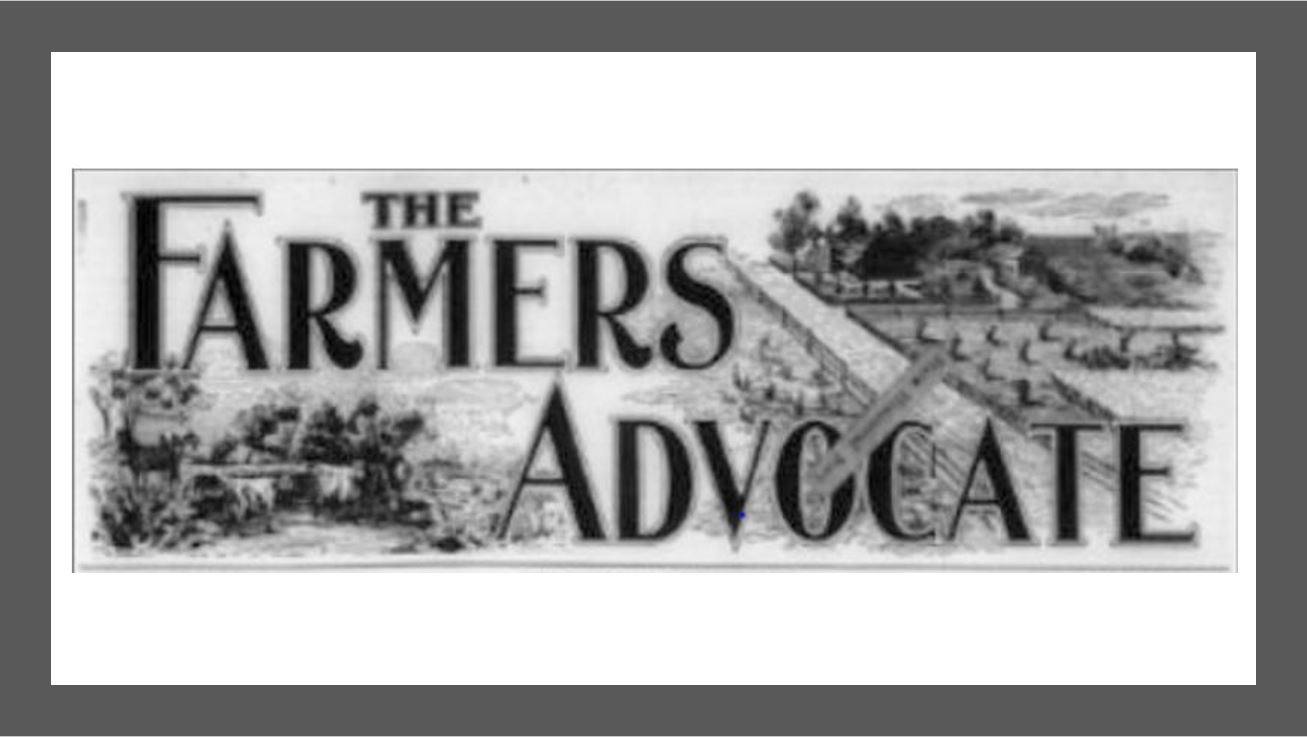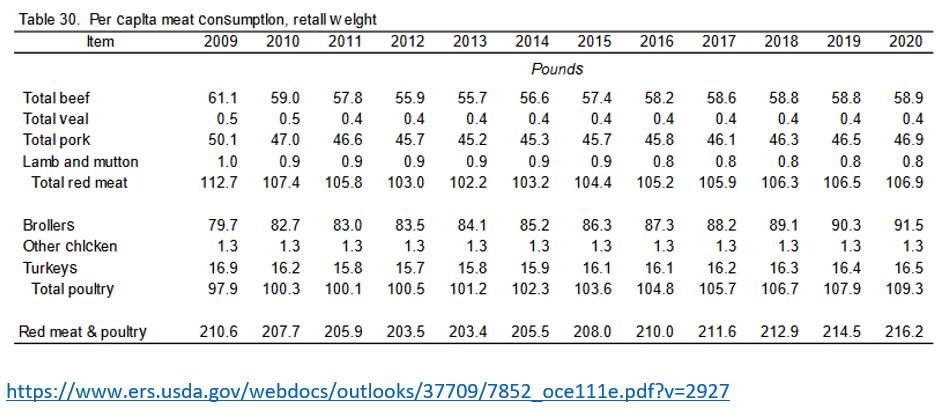
March 5, 1908
CONSUMPTION OF MEAT
Topeka, Kansas – That meat consumption per capita has declined in this country since 1840 is plainly indicated. There is some ground for believing that at that time meat constituted about half of the national dietary in terms of total nutritive units consumed, whereas now it constitutes about one-third.
The average private family of 1900 contained 4.6 persons, and this family consumed on the average 855 pounds of dressed weight meat or 680 pounds of edible meat in the dressed weight. Upon adding to the 680 pounds the edible parts not included in the dressed weight, the average family consumption of edible meat was 840 pounds.
In terms of meat and its products substantially as purchased by the consumer, that is, the sum of the dressed weight and of the weight of the edible parts not included in the dressed weight, the private family of 1900 bought on the average 1,014 pounds of meat, or over half a ton. That makes an average of 2.78 pounds per day, and includes not merely meat commonly known as such, with its bones and retail butchers’ trimmings, but includes lard, edible tallow, the meat products contained in sandwiches, pies, bakery products, sausage, etc., and all kitchen and table waste.
Beef and veal constitute 47 percent of the meat consumption; mutton and lamb 7 percent and 46 percent. In the exports, beef by weight is 34 percent and pork 66 percent.
Thanks to Tom Giessel, NFU Historian
###
“What would the economic and climate impact be if we could restore beef consumption to 1900 levels … ?”
Comparing per capita consumption of beef and pork:
1900 – Beef – 104 pounds per person, 86 pounds based on 840 pounds per family
1900 – Pork – 101 pounds per person, 84 pounds based on 840 pounds per family
2020 – Beef – 58.9 pounds per person (retail wt.)
2020 – Pork – 46.9 pounds per person (retail wt.)
Per capita beef consumption was considerably higher in 1900 when thousands of skilled butchers in small shops were cutting beef directly from carcasses without the benefits of modern refrigeration. The perceived efficiency of big meatpackers and their industrially produced boxed-beef, along with the promotional efforts of the beef checkoff, has only had negative outcomes – reduced quality and demand, worker exploitation, animal abuse, and the dramatic loss of small meatpackers, butcher shops, and cattle producers.
What would the economic and climate impact be if we could restore beef consumption to 1900 levels and essentially eliminate beef imports? What if grazing was permitted on the approximately 21 million acres of Conservation Reserve Program (CRP) grasslands, plus any other highly erodible or excess crop acres that could become well-managed carbon-sequestering pasture lands? And then add the potential of restoring local/regional markets in which the producer receives a fair share of the consumer beef dollar.
We should also consider how a return to healthy food and a healthy Earth could reduce the degenerative diseases caused by highly processed modern food.














I eat lots of red meat, too.
Just because it’s not my most favorite, does not mean I don’t need it.
I discovered some 46 years ago, that the minerals, especially [colloidal] calcium and iron, are by far, more assimilable from meat and other animal products, than from plants!
Beef is by far, America’s most abundantly available red meat.
Still, one needs to consider the other aspects of America’s agriculture..pork and poultry.
Sadly, in recent years, the packers have successfully wrested most commercial pork production, from the hands of independent [non-corporate/contract] producers, just as poultry was done, back in the late 1960’s.
I am a poultry producer, but only on a very small scale.
I see a handful of other independent producers, here and there, but we can only supply a very small niche market.
Likewise, some small pork producers are doing the same, too.
We, the farmers, really need to cohere and form cooperatives, to build the community of independent pork and poultry production, on a commercial scale, after the fashion of Callicrate and Nolan Ryan beef production, processing and sale!!!